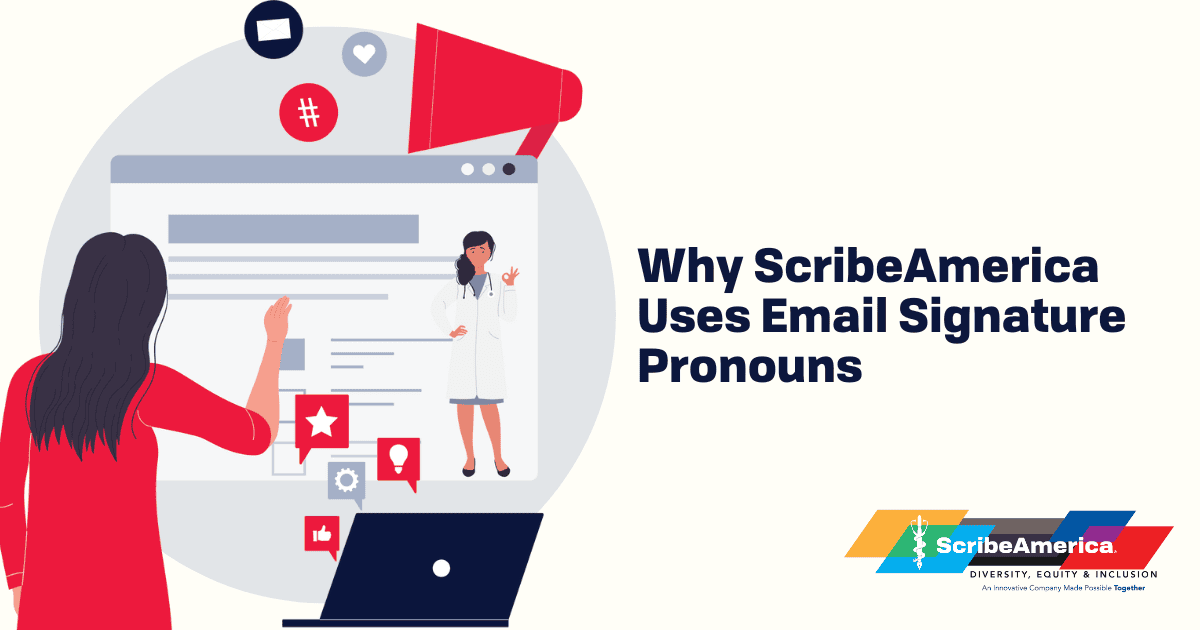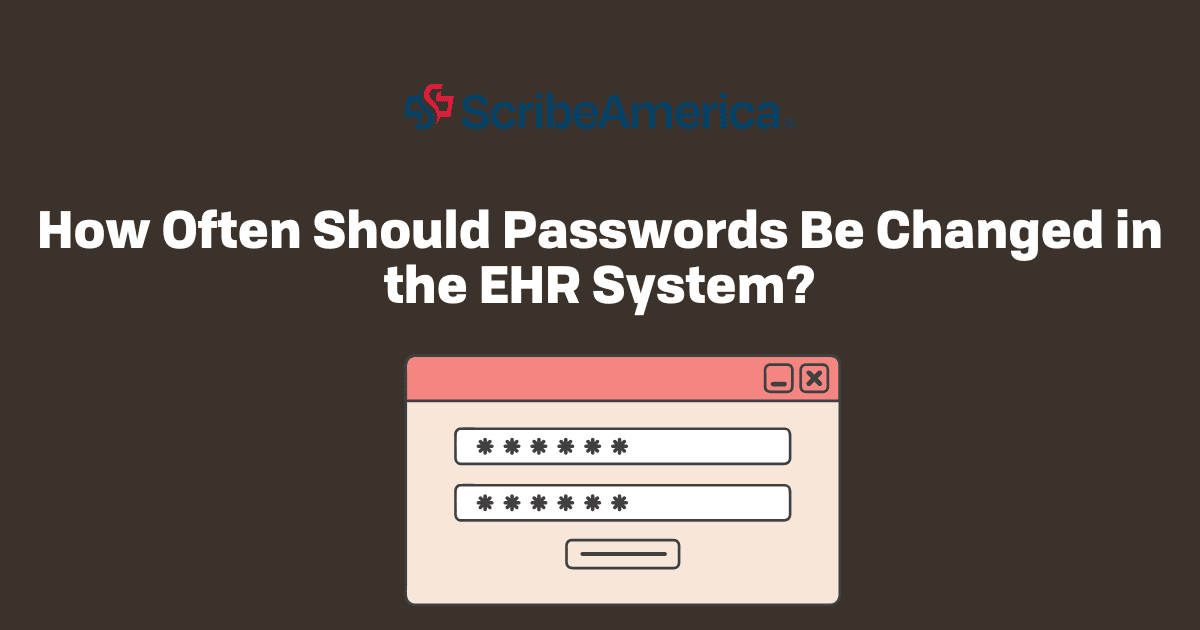Key Points:
- Including pronouns in email signatures is now a common practice that promotes clear and respectful communication.
- Instead of assuming someone’s gender based on their name or context, pronouns in signatures help avoid misunderstandings and harm.
- Using pronouns at work fosters inclusivity and allows everyone to feel comfortable being themselves.
- Adding your own pronouns to your signature helps normalize the practice and creates a safer environment for others.
You may have seen it before. You’re scrolling through an email correspondence and there, at the very bottom of a signature, it says “Pronouns: she/her.” Or “Pronouns: he/him.” Or “Pronouns: they/them.” Ten years ago the inclusion of email signature pronouns would be considered unique, but now the practice is commonplace.
At ScribeAmerica we support and encourage the use of pronouns in email signatures. It's a simple way to keep communication clear and respectful. So how should you use this information, why is it important, and should you do the same?
Applying Pronouns with New Context
Everyone and everything uses pronouns - it's a standard part of any language - along with verbs, nouns, and adjectives. Pronouns help us refer to someone or something without constantly naming them.
Our language counts on us to assume what someone’s pronouns are. But assumptions are often wrong, and even more difficult to ascertain via email. Often, our assumptions can be hurtful or harmful. Perhaps you are emailing someone named Taylor, but you don’t know if they are a man, a woman, or a non-binary person. Instead of trying to use context clues to determine someone’s gender, you can simply refer to their email signature.
Consider your co-worker Jon. Jon doesn’t think their gender matters as far as business is concerned. Jon is right. Gender has no impact on how effective they are at their job. It only matters when we are communicating respectfully with one another. Adding they/them to their signature allows Jon to comfortably and professionally be themselves.
Practice Makes Perfect
Check out the examples below:
Taylor Foster
Content Manager
Business Enterprises
Phone (XXX) XXX-XXXX
Pronouns: she/her
Example: “I received the report from Taylor today, she said she’d have some more data for us tomorrow. I will wait for her next email before reviewing.”
Taylor Foster
Content Manager
Business Enterprises
Phone (XXX) XXX-XXXX
Pronouns: he/him
Example: “I received the report from Taylor today, he said he’d have some more data for us tomorrow. I will wait for his next email before reviewing.”
Taylor Foster
Content Manager
Business Enterprises
Phone (XXX) XXX-XXXX
Pronouns: they/them
Example: “I received the report from Taylor today, they said they’d have some more data for us tomorrow. I will wait for their next email before reviewing.”
Encountering New Pronouns and Asking Respectfully
Sometimes you may encounter personal pronouns that you aren’t familiar with or don’t understand. Someone never has to explain to you why they use the pronouns they use - that can be incredibly personal information. But it’s always okay to ask someone to clarify and let you know how they’d like to be referred to.
Consider Ben. Ben’s email signature says his pronouns are he/they. This means that Ben is comfortable using either he/him or they/them pronouns, and you can use either to refer to them. If you aren’t sure what to use, or how, try reaching out to Ben with a friendly message.
“Hi, Ben! It's great to meet you. I see in your email signature that you use he/they pronouns. What do you prefer I use?”
Why Pronouns in Work Signature Matter?
A good job isn’t made up of a salary and job description alone. Now more than ever, culture is an enormous decision factor for prospective employees. While there is always a degree of separation between our professional and personal lives, it is important to know that you can safely be yourself at work.
Read also our article about: Diversity, Equity, and Inclusion in the Workplace.
Should You Add Pronouns to Your Email Signature?
In short, yes. Even if you feel that your pronouns are obvious, that supports the idea that we should assume the gender identity of folks when we encounter them. Instead, adding your pronouns to your email signature helps make the practice commonplace, and will make it feel safer for others to share their preferred pronouns.




